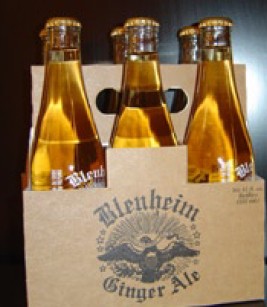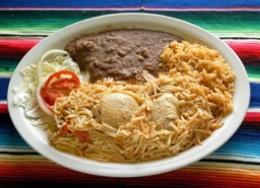
A Brief Tour of the United States
American Corner | 2013-01-31 13:46
There are those who believe that it is no longer appropriate to talk about regional differences in the United States—that all Americans have been melded into one “monolithic” culture characterized by one way of thinking, one way of eating, one way of speaking. It is certainly true that there are few places in the United States where you cannot eat at McDonald’s, Burger King, or Pizza Hut. Almost anywhere you live you can shop at Wal-Mart, The Gap, or Foot Locker at malls that differ very little from one another. Almost everyone has access to the same television shows and movies, and many can listen to the same mass-market music. But does this mean that regional differences are more myth than reality? I don’t think so.
Persistent Local Cultures
First, let’s talk about food. It is true that much food is standard throughout the country—a person can buy the same brands of frozen pizza everywhere in the United States. Cereals, candy bars, and many other items come in identical packages from Alaska to Florida. Generally, the variety and quality of fresh fruits and vegetables vary little from one state to the next. On the other hand, it would be unusual to be served hush puppies (a kind of fried corn bread) or grits (ground and boiled corn prepared in a variety of ways) in Massachusetts or Illinois, but normal to get them in Georgia or other parts of the South. While Coke, Pepsi, and Seven-Up are available everywhere, it is impossible to find Blenheim Ginger Ale outside of South Carolina. Chicago pizza (very deep dish, thick crust) is quite different from New York pizza. I’ve eaten deep-fried crocodile meat in New Orleans, but never seen it anywhere else in the country. People everywhere eat Mexican-style food at Taco Bell, but Tex-Mex food in Texas is very different from other types of so-called Mexican food. And many areas have their own special hot dog.

Blenheim Ginger Ale is sold in four types—Old #3 HOT, #5 NOT AS HOT, #9 DIET, AND #11 GINGER BEER—http://theacf.com/blenheim/.
I grew up in the foothills of western South Carolina. Every meal at home included some form of potatoes and bread. When I graduated from university, I first worked in the South Carolina Low Country, the area near the coast. I was quite surprised that nearly every meal included rice in some form. I also learned that rice was cooked in a completely different manner—steamed instead of simply boiled. When I later moved to the Pee Dee region in northeastern South Carolina, I first heard of chicken bog, a dish in which small pieces of chicken and coarsely ground black pepper are cooked in rice. So you see, there are definitely still regional differences in food—not just between regions, but even within one small state.
Another difference is language. While American English is generally standard, American speech often differs according to what part of the country you are in. Southerners tend to speak more slowly, in what is referred to as a “Southern drawl.” Midwesterners use “flat” a’s, and the New York City patois features a number of Yiddish words contributed by the city’s large Jewish population—words such as “schlepp” (to drag or haul) or “nosh” (snack). Natives of Boston or the Bronx are quickly identifiable by their marked accent, and you probably know about “Valley talk,” a form of teenage slang, from southern California. Immigrant influence is also evident in place names and certain words used in regions with heavy concentrations of a particular ethnic group. Examples include Lafayette County, Wisconsin; Baton Rouge, Louisiana; Wounded Knee, South Dakota; and Santa Cruz, California.
Vocabulary also differs from region to region. Once when I was in graduate school, I mentioned that one of the “eyes” on my stove wasn’t working properly, and my colleagues from other parts of the country had no idea that I was talking about what they call a burner. The language of the West includes numerous words of Spanish origin (many of which have spread across the country), and there are parts of the Midwest and Pennsylvania where many German words are still used. If you’ve seen the 1985 movie Witness, you’ve seen an example of this.

Traditional “Chicago pizza” is deep-dish with hearty fillings.
Regional differences also make themselves known in less tangible ways, such as attitudes and outlooks. An example is the attention paid to foreign events in newspapers. In the East, where people look out across the Atlantic Ocean, some papers tend to show the greatest concern with what is happening in Europe, the Middle East, and Africa. On the West Coast, the focus is often on events in East Asia and Australia.
Americans share many characteristics, including belief in the importance of privacy, individualism, and personal independence. But many Americans also think of themselves as having certain characteristics linked to their region, such as New England self-reliance, Southern hospitality, Midwestern wholesomeness, and Western mellowness.
The following sections present some of the geographic characteristics and historical influences, such as settlement patterns, that have contributed to these regional differences.
Before focusing on the regions of the United States, though, it is important to have a grasp of some features of the country as a whole. The United States is the third largest country in land area, behind Russia and Canada. In population, it is also the third largest—this time behind China and India. To give you an idea of how large the country is, it takes approximately five days to drive across the continental Unites States. And that’s not counting Hawaii or the largest state, Alaska.

A plateful of thick fideo con pollo includes servings of rice, refried pinto beans, lettuce, tomato, and onions. This is a typical Tex-Mex meal.
The Regions
There are many possible ways to divide the country into regions. In this commentary, we use a basic and traditional grouping: New England, the Mid-Atlantic States, the South, the Midwest, and the West. Please remember that these are not official designations. They are far from absolute, and characteristics often blend from one region into the next, as shown in the accompanying map. The lists of such things as cities and literary figures are not by any means exhaustive, but are intended simply to provide an introduction. The list of Internet resources at the end of the journal can provide access to more detailed information.
Share this page



















